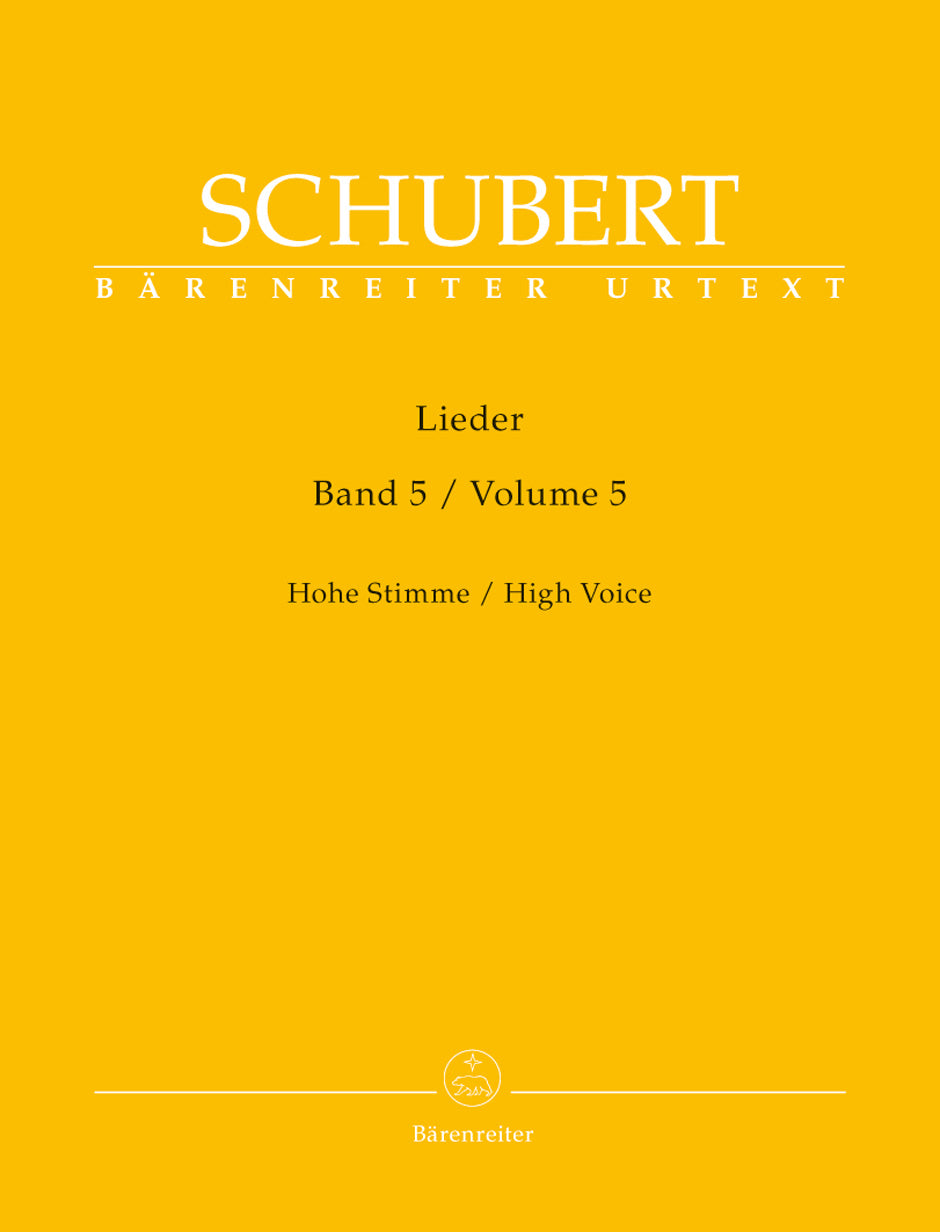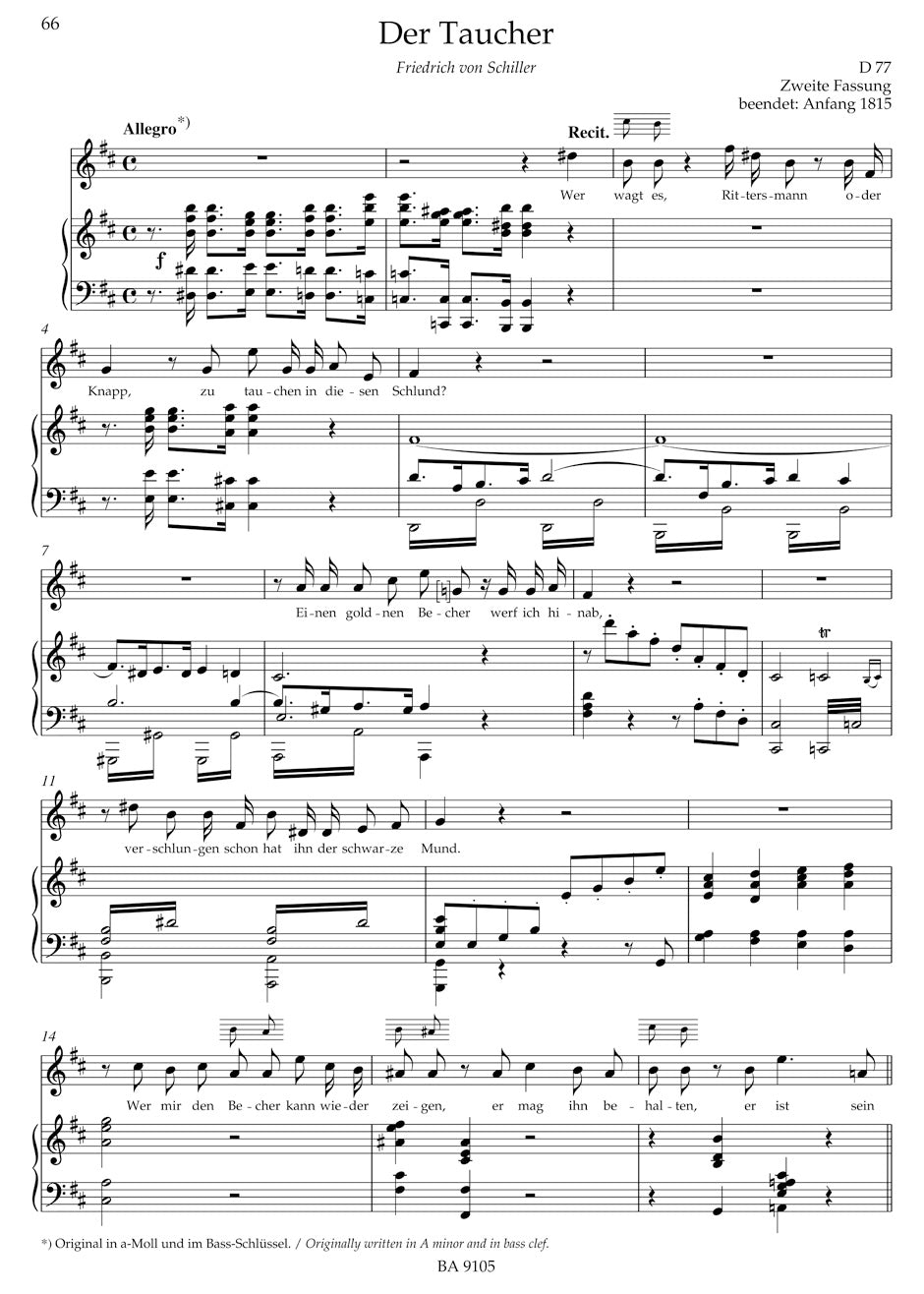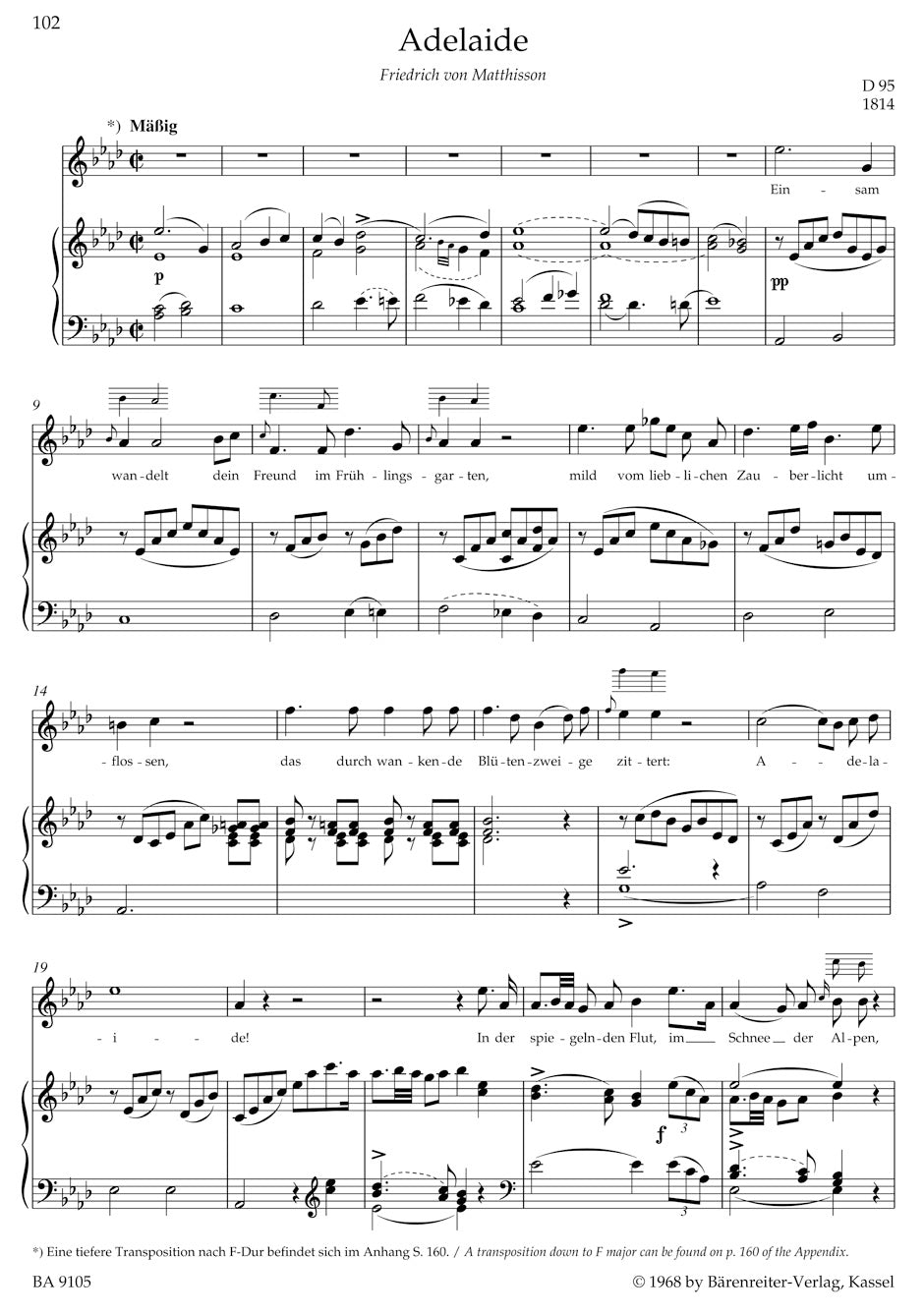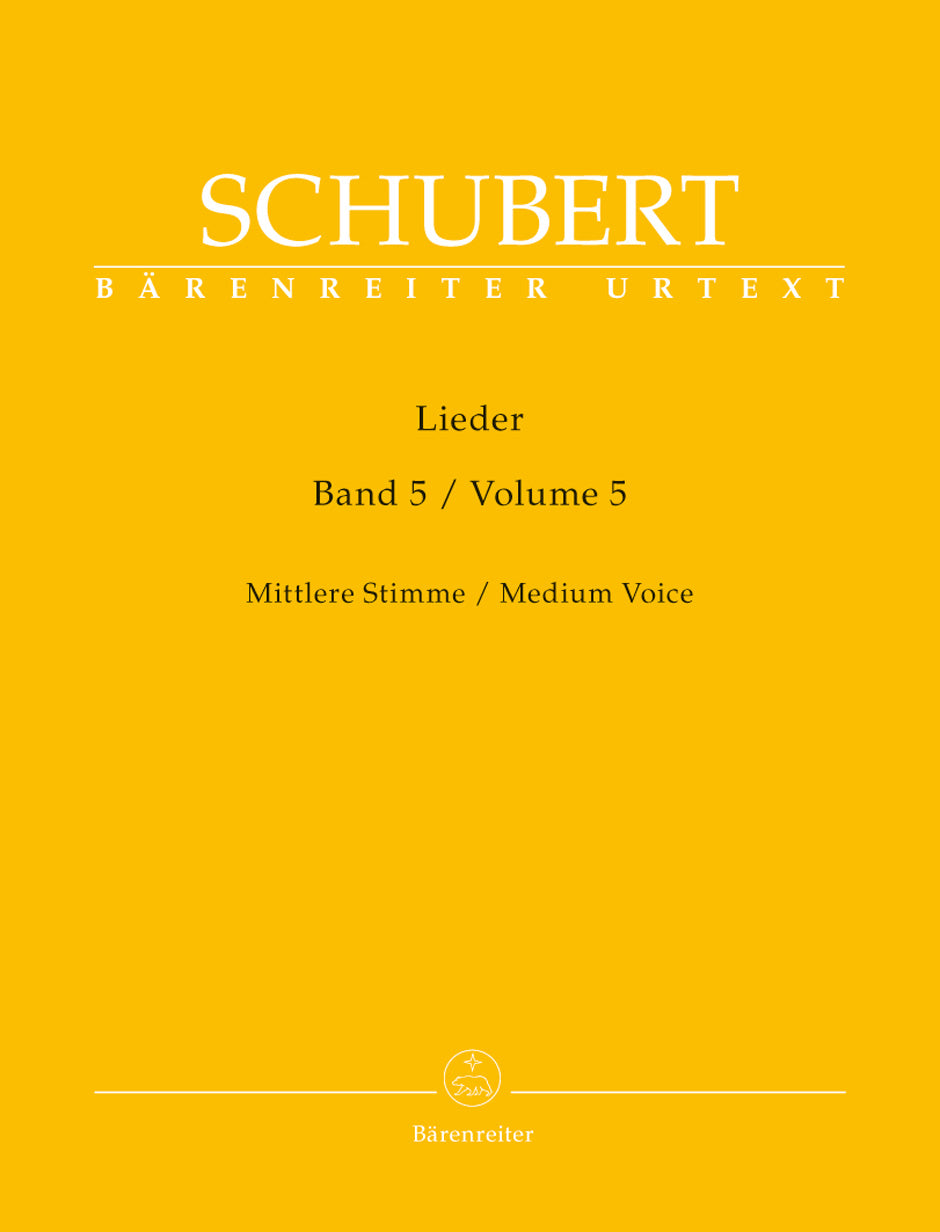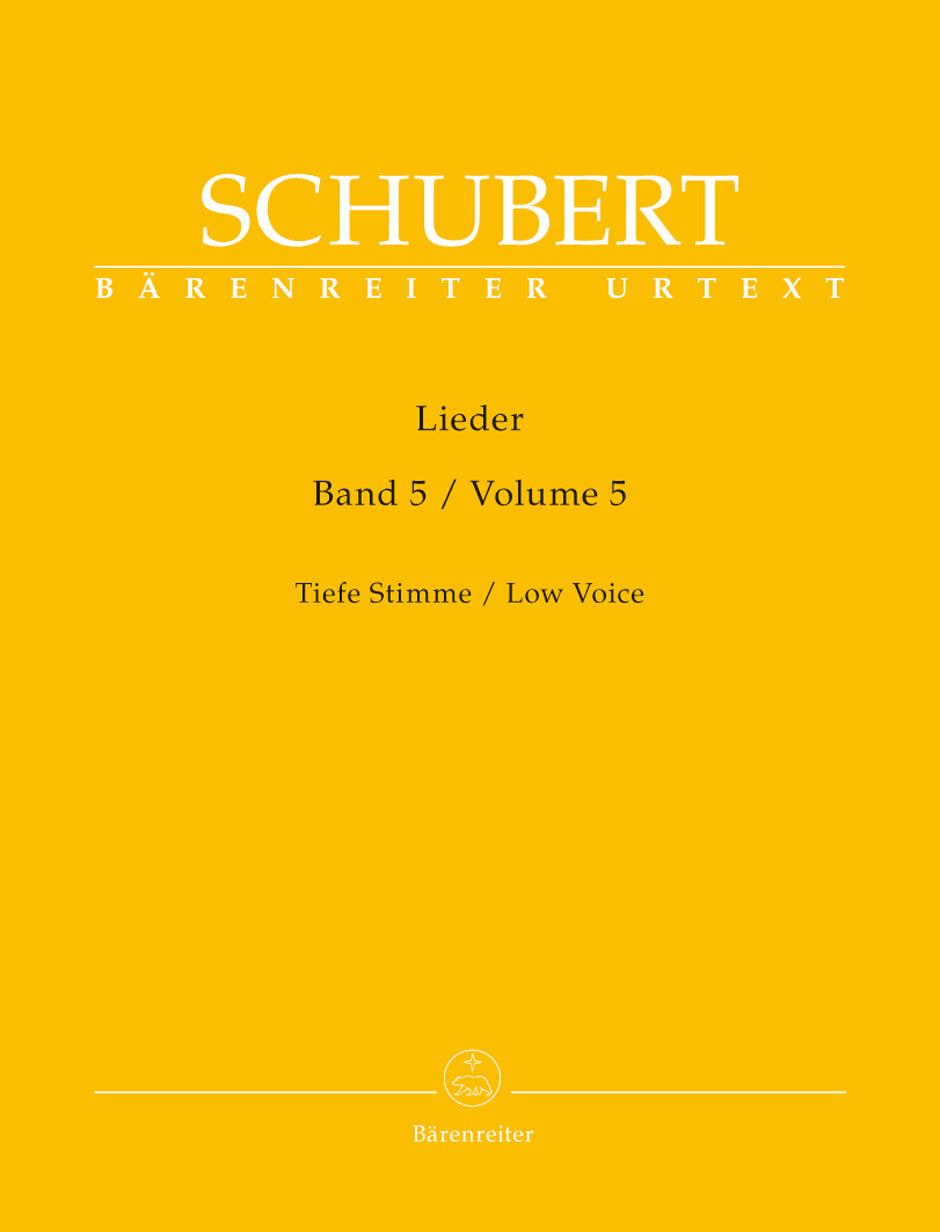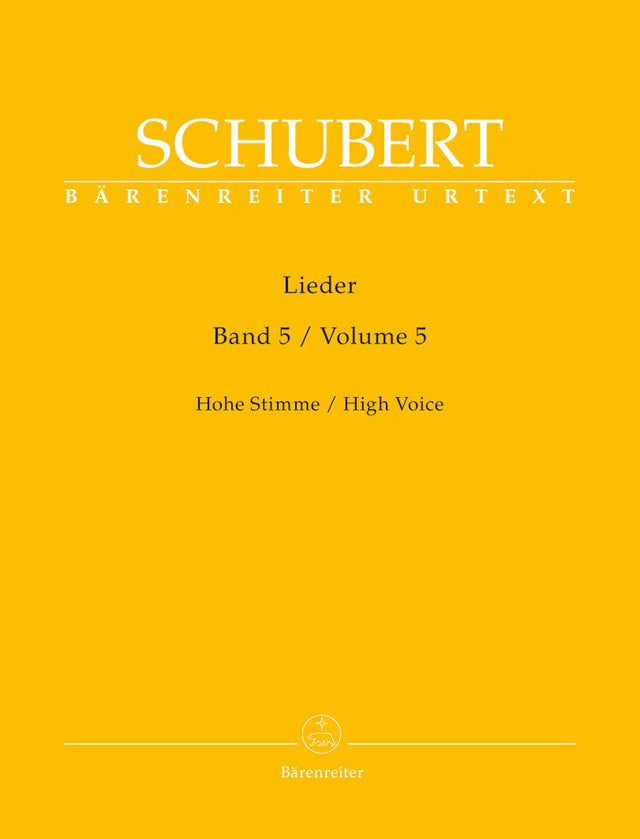Schubert: Lieder - Volume 5
In stock and typically ships within 1 business day.
- Composer: Franz Schubert (1797-1828)
- Editor: Walther Dürr (1932-2018)
- Instrumentation: Piano, Voice
- Work Language: German
- ISMN:
- Size: 9.1 x 11.8 inches
- Pages: 148
- Urtext / Critical Edition
Description
The lieder in this edition were composed in the years 1811 to 1814. The first, Hagars Klage, D 5, dated March 30, 1811, is also his first complete surviving song. The first eleven lieder are evidence of his early studies (1811-1813/14). During this period, Schubert immersed himself in Johann Rudolf Zumsteeg's ballads and lieder and wrote Italian arias during his composition lessons with Antonio Salieri. He also composed a single strophic song ("Klaglied", D 23), which the only one of these songs was published shortly after his death in November 1830 as Op. 131, No. 3. His apprentice work, as it were, was the major ballade "Der Taucher" (D 77) which was composed between 1813 and roughly the beginning of 1815. Probably not by chance, his first complete opera ("Des Teufels Lustschloss", D 84) was written at the same time. He also set fourteen poems by Friedrich von Matthisson exploring the principle of the strophic lied.
Works:
- Hagars Klage, D 5
- Leichenfantasie, D 7
- Der Vatermörder, D 10
- Klagelied, D 23, Op. post 131, No. 3
- Misero pargoletto, D 42
- Totengräberlied, D 44
- Die Schatten, D 50
- Verklärung, D 59
- Der Taucher, D 77
- Son fra l'onde, D 78
- Adelaide, D 95
- Trost. An Elisa, D 97
- Erinnerungen, D 98
- Andenken, D 99
- Geisternähe, D 100
- Erinnerung (Todtenopfer), D 101
- Die Betende, D 102
- Die Befreier Europas in Paris, D 104
- Lied aus der Ferne (first version), D 107
- Lied aus der Ferne (second version), D 107
- Der Abend, D 108
- Lied der Liebe, D 109
- Romanze (first version), D 114
- Romanze (second version), D 114
- An Laura, als sie Klopstocks Auferstehungslied sang, D 115
- Der Geistertanz, D 116
Publishers use a lot of words to describe what they sell, and we know it can be confusing. We've tried to be as clear as possible to make sure you get exactly what you are looking for. Below are descriptions of the terms that we use to describe the various formats that music often comes in.
Choral Score
A score for vocalists that only contains the vocal lines. The instrumental parts are not there for reference. Generally, cheaper than a vocal score and requires multiple copies for purchase.
Facsimile
Reproductions of the original hand-written scores from the composer.
Full Score
For ensemble music, this indicates that the edition contains all parts on a single system (there are not separate parts for each player). In larger ensembles, this is for the conductor.
Hardcover
Hardbound. Generally either linen-covered or half-leather.
Orchestral Parts
Similar to a wind set, this is a collection of parts. In the case of strings, the numbers listed are the number of copies included, though generally these are available individually (often with minimum quantities required).
Paperback
When publishers offer multiple bindings (e.g. hardcover) or study scores, this is the "standard" version. If you're planning to play the music, this is probably what you want.
Performance / Playing Score
A score of the music containing all parts on one system, intended for players to share. There are not separate parts for each player.
Set of Parts
For ensemble music, this indicates that there are separate individual parts for each player.
Solo Part with Piano Reduction
For solo pieces with orchestra, this is a version that contains a piano reduction of the orchestra parts. For piano pieces, two copies are typically needed for performance.
Study Score
A small (think choral size) copy of the complete score meant for studying, and not playing. They make great add-ons when learning concertos and small chamber works.
Vocal Score
A score prepared for vocalists that includes the piano/organ part or a reduction of the instrumental parts.
Wind Set
For orchestral music, this is a collection of wind and percussion parts. The specific quantities of each instrument are notated.
With Audio
In addition to the printed music, the edition contains recordings of the pieces. This may be an included CD, or access to files on the internet.
With / Without Fingering (Markings)
Some publishers prepare two copies - a pure Urtext edition that includes no fingering (or bowing) suggestions and a lightly edited version that includes a minimal number of editorial markings.

